Mariano Fortuny Marsal, engraver. (Reus 1838-Roma 1874)
by Silvia Pagliano.
Recently was presented in the exhibition room Ignacio Zuloaga in Fuendetodos an exceptional exhibition of the engravings by Mariano Fortuny, from the Municipal Institute of Museums of Reus (28 October 2016-8 January 2017).
I was invited by RTV Aragon for Angel Jimenez the work there exhibited, 29 engravings-currency from 1861 to 1870.
Seems a common place that all engraving work makes reference to don Francisco de Goya, in this case is justified the reference because it is the birth place of the Master, of the presence of the Museum which preserves his work and admiration that Fortuny professed to Goya.
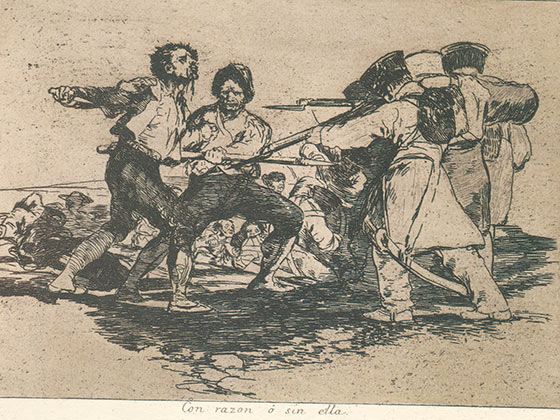
“2. CON RAZÓN O SIN ELLA”
AGUAFUERTE, AGUADA, PUNTA SECA, BURIL Y BRUÑIDOR
15 X 20,9 CM
FRANCISCO DE GOYA (DESASTRES DE LA GUERRA)
Fortuny was submitted by the provincial Council of Barcelona to the Hispanic-Moroccan War as cartoonist, to give testimony of that event, as he possessed exceptional qualities for it. This would be his first trip, in 1860, and would return sometimes. It was a kind of “photojournalist” without a camera, although then were evidence of this use in war fronts as in Crimea (1853-54). These drawings and sketches served as a motive in his paintings The Battle of Tetuán, 1863-1873, The Battle of Wad-Rass, and enjoyed great fame because of them.
These works do not constitute a “report” in the traditional sense. Collects images and moved them to the canvas, with pictorial mastery, of course, but there is no drama, there is no allegation of cruelty or barbarity in this war, there is not a critical eye, is the polar opposite of ‘Rightly or Wrongly’, 2/82 of the Disasters of War by Goya. Fortuny was an aesthete and also a melancholy man, and perhaps of this there is estrangement in his images.
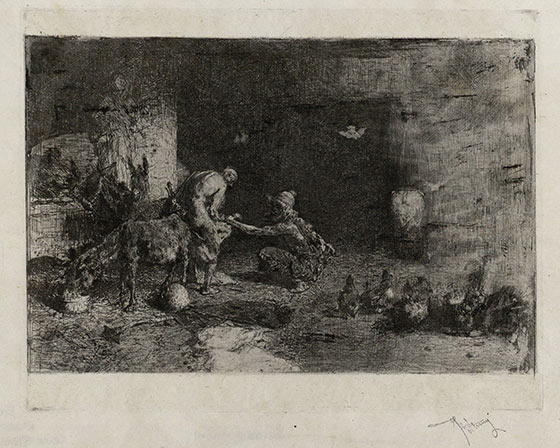
“HERRADOR MARROQUÍ”
AGUAFUERTE Y AGUATINTA
20,5 X 26,4 CM
Within the engraving work of Fortuny it is not dominated by a “central theme”, such as Rembrandt or Piranesi, Ribera or Goya. In his plates touches several common themes in his time, as the traditional character (A Muleteer, a lousy, a beggar, etc.) already known in the work of Rembrandt and Callot. The engravings due to his stay in Morocco are master pieces of the engraving: Kabyle dead in 1867, Arabic sitting, Moroccan Horse, Arabic ensuring the corpse of his friend. Influenced by the hard landscape and the African light intensity he transmitted to his plates astonishingly. Shadows and scorching light zones. Dark bodies and shiny fabrics. There are etchings, sometimes combined with aquatint, of great delicacy.
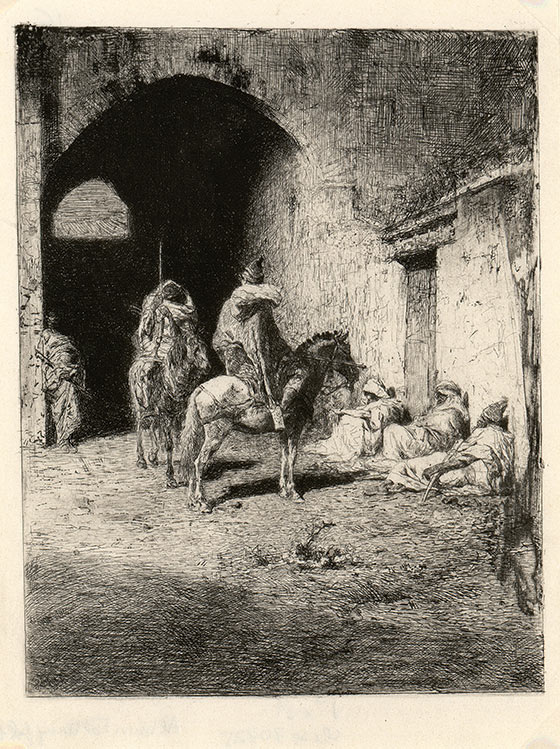
“GUARDIA DE LA KABBALAH EN TETUÁN” CIRCA 1861
AGUAFUERTE. 21,4 X 16,5 CM.
There are not testimonies about his knowledge of Goya’s engravings, but of the impression caused by the paintings of the Master when saw them in Madrid. But he knew the treatment of lights and shadows of the Aragonese.
Are known 35 engravings in total, generally of small and medium format of 10 x 6 cm up to 40 x 50 cm some.
His extraordinary fame as a painter put in second order his engraving work (and also his great watercolours) where Fortuny shows freedom and variety of styles in his way of carefully scratch, finely or nervous, fast, eventful, even frantic.
Genius and versatility of an artist often confused with his son Mariano Fortuny i Madrazo, known as decorator, designer, photographer, famous among the bourgeoisie of Venice. Our artist was reserved, shy, little lover of fame and social life of which wished to set aside is to enjoy of full creative freedom without pressures of his commercial success, that he never sought.
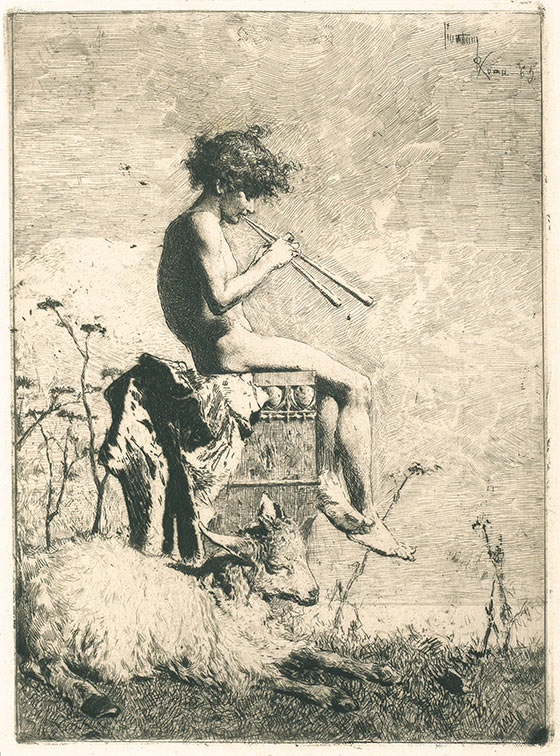
“IDILIO”, 1865
AGUAFUERTE
20 X 14,5 CM
His early death at age 35, leaves the question about his possible future artistic development. Some critics speculate a turn toward classicism, given his inclination towards the themes of Arcadia, as in Idyle. His stay in Rome for years influenced him deeply, admired classical Art and Renaissance, which had a deep knowledge. Other critics speak of his tendency towards Impressionism already evident in the painting technique of his recent paintings.
He died in 1874 and his funeral in Rome was apotheosis.
Silvia Pagliano.
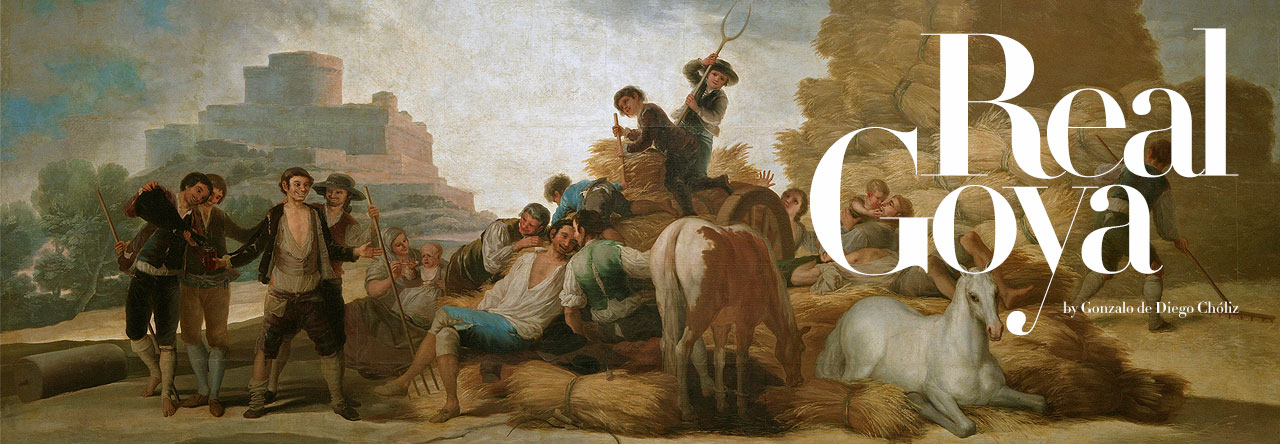
Leave a Reply